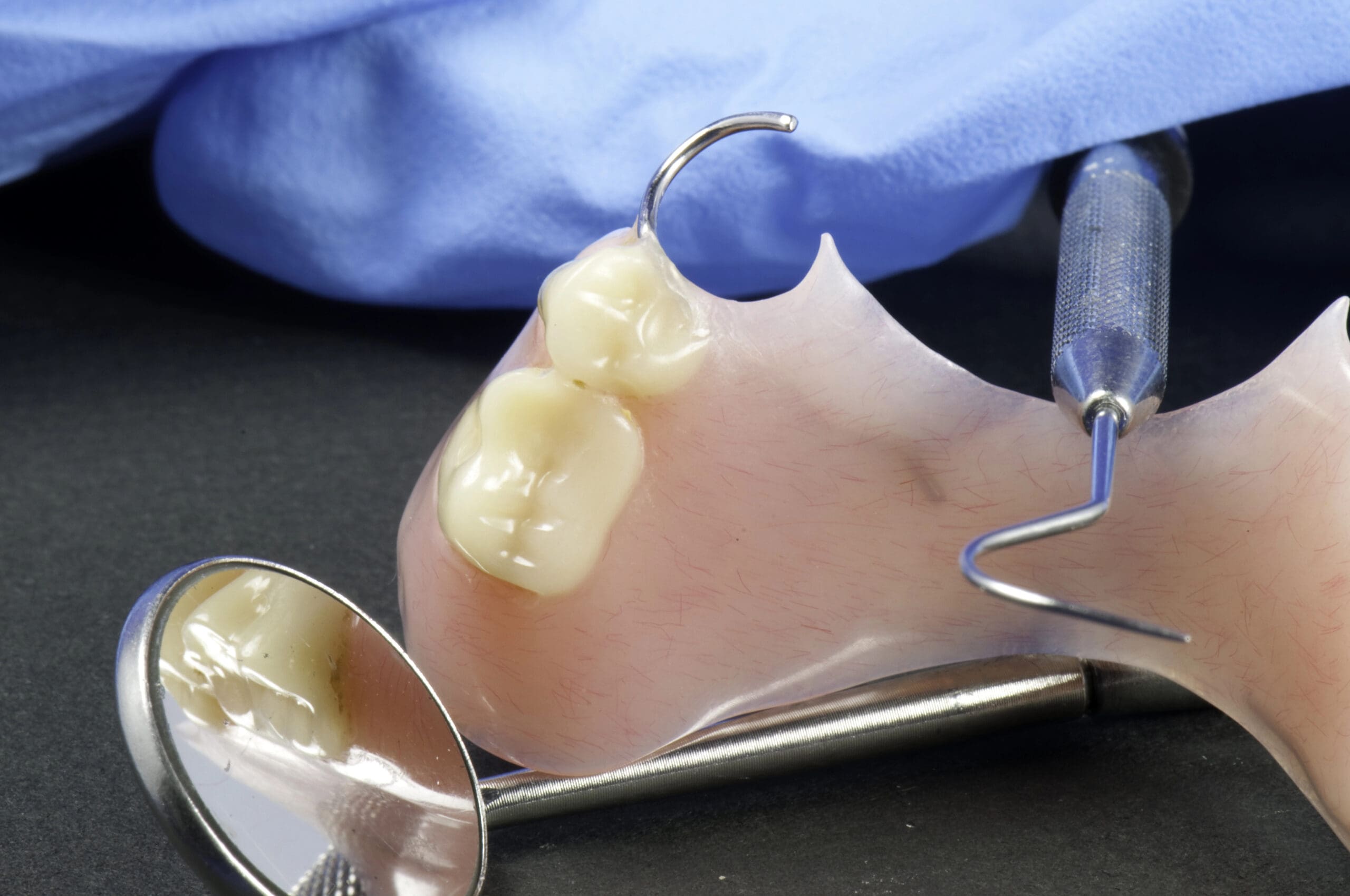Are you considering the partial dental bridges pros and cons to make an informed choice about your dental health? Understanding the benefits, such as improved aesthetics and functionality, alongside potential drawbacks like maintenance requirements, can help you weigh your options effectively.
Partial dental bridges pros and cons
When considering the partial dental bridges pros and cons, it’s essential to understand the different types available. Partial dental bridges are designed to replace one or more missing teeth and can be made from various materials, including metal, porcelain, or a combination of both. The most common types include traditional partial bridges, which use crowns on either side of the gap, and cantilever bridges, which are supported by a crown on just one side. Another option is the Maryland bridge, which uses a metal or porcelain framework bonded to the back of adjacent teeth. Each type has its own set of advantages and potential drawbacks, making it crucial to weigh these factors carefully.
Exploring the partial dental bridges pros and cons further, it’s important to consider how each type might fit into your lifestyle and oral health needs. Traditional bridges are known for their durability and strength, while cantilever bridges might be suitable for areas with less stress, such as front teeth. Maryland bridges offer a more conservative approach as they require less alteration to surrounding teeth. For more information on selecting the best option for your needs, you can explore Affordable Dental Bridge Options: Choosing the Right Fit for Your Smile. Understanding these types can help in making an informed decision that aligns with your dental health goals.
Benefits of Partial Dental Bridges
Partial dental bridges offer a range of benefits that can significantly enhance oral health and overall quality of life. One of the primary advantages is their ability to restore the natural appearance of your smile by filling in gaps left by missing teeth. This not only improves aesthetics but also helps maintain the structure of your face, preventing the sunken look that can occur when teeth are missing. Additionally, partial dental bridges can improve speech clarity and chewing efficiency, making everyday activities more comfortable and enjoyable.
Another significant benefit of partial dental bridges is their role in maintaining the alignment of remaining teeth. When a tooth is lost, adjacent teeth may shift into the empty space, leading to misalignment and potential bite issues. By filling these gaps, partial dental bridges help preserve the natural positioning of your teeth, contributing to better oral health in the long run. For those interested in exploring more about partial dental bridges pros and cons, you can learn more from our Expert Dental Bridges Meridian page.
Potential Drawbacks to Consider
When evaluating partial dental bridges, it’s essential to weigh the pros and cons to make an informed decision. One potential drawback is that partial dental bridges may require the alteration of adjacent healthy teeth to anchor the bridge securely, which can lead to future dental issues. Additionally, while they are designed to be durable, partial dental bridges might not last as long as other dental solutions, necessitating replacements or repairs over time. Another consideration is that they may not perfectly match the natural color and texture of your existing teeth, potentially affecting the overall aesthetic of your smile. Understanding these partial dental bridges pros and cons can help you assess whether this option aligns with your dental needs and expectations.
Cost Factors and Considerations
When evaluating the partial dental bridges pros and cons, understanding the cost factors and considerations is crucial for making an informed decision. The price of partial dental bridges can vary significantly based on several elements, including the materials used, the complexity of the procedure, and the geographic location of the dental practice. Additionally, insurance coverage can play a significant role in determining out-of-pocket expenses, as some plans may cover a portion of the costs while others may not. It’s important to consider these financial aspects alongside the functional and aesthetic benefits of partial dental bridges to ensure they align with your budget and dental health goals. For more information on dental care options, you can visit Alliance Dental Care, a trusted Meridian Dentist.
Longevity and Durability Aspects
When considering partial dental bridges, understanding the longevity and durability aspects is crucial in weighing the partial dental bridges pros and cons. Generally, partial dental bridges are designed to withstand daily wear and tear, providing a reliable solution for missing teeth. The materials used in their construction, such as metal alloys or ceramics, contribute significantly to their durability, allowing them to last for many years with proper care. However, it’s important to note that the lifespan of a partial dental bridge can vary based on factors like oral hygiene practices and individual lifestyle habits. As you explore the partial dental bridges pros and cons, considering how long they might last and how well they can endure everyday use is an essential part of making an informed decision.
Aesthetic Impact on Smile
When considering partial dental bridges, one of the key factors to weigh is the aesthetic impact on your smile. Partial dental bridges can significantly enhance the appearance of your teeth by filling in gaps and creating a more uniform look. This improvement can boost confidence and make social interactions more enjoyable. However, it’s important to consider both the pros and cons of partial dental bridges, as they may not perfectly match the natural color and texture of your existing teeth. Understanding these aesthetic implications can help you make an informed choice about whether partial dental bridges are the right option for you.
Maintenance and Care Requirements
When considering the partial dental bridges pros and cons, understanding the maintenance and care requirements is essential for ensuring their longevity and functionality. Regular oral hygiene practices, such as brushing and flossing, play a crucial role in maintaining the condition of partial dental bridges. It’s important to be aware that these dental appliances may require periodic professional cleanings to prevent plaque buildup and potential complications. Additionally, being mindful of dietary choices can help in preserving the integrity of the bridge. By acknowledging these maintenance aspects, individuals can better weigh the partial dental bridges pros and cons in their decision-making process.
Impact on Oral Health
When considering partial dental bridges, understanding the pros and cons is crucial for assessing their impact on oral health. Partial dental bridges can play a significant role in maintaining the alignment of your teeth by filling gaps left by missing teeth, which helps prevent surrounding teeth from shifting. This can contribute to better oral hygiene by making it easier to clean between teeth and reducing the risk of plaque buildup. However, it’s important to weigh these benefits against potential drawbacks, such as the possibility of increased stress on adjacent teeth and the need for regular maintenance to ensure long-term oral health. By evaluating the partial dental bridges pros and cons, individuals can make informed decisions that align with their oral health goals.
Comparing Alternatives to Bridges
When considering partial dental bridges, it’s essential to weigh the pros and cons against other dental restoration options. Alternatives such as dental implants, dentures, and crowns each come with their own set of advantages and disadvantages. While partial dental bridges can effectively restore function and aesthetics, they may not be suitable for everyone. Dental implants, for instance, offer a more permanent solution but require sufficient bone density and a longer healing period. Dentures, on the other hand, are removable and may be more affordable but can lack the stability of bridges. Crowns are typically used for individual teeth and might not address multiple missing teeth as effectively as partial dental bridges. Understanding the partial dental bridges pros and cons in comparison to these alternatives can help individuals make an informed decision based on their specific dental needs and circumstances.
Conclusion
Understanding the partial dental bridges pros and cons is essential for making an informed choice about your dental health. For more information, feel free to call us at 208-608-2098 or read reviews on Google Maps.




